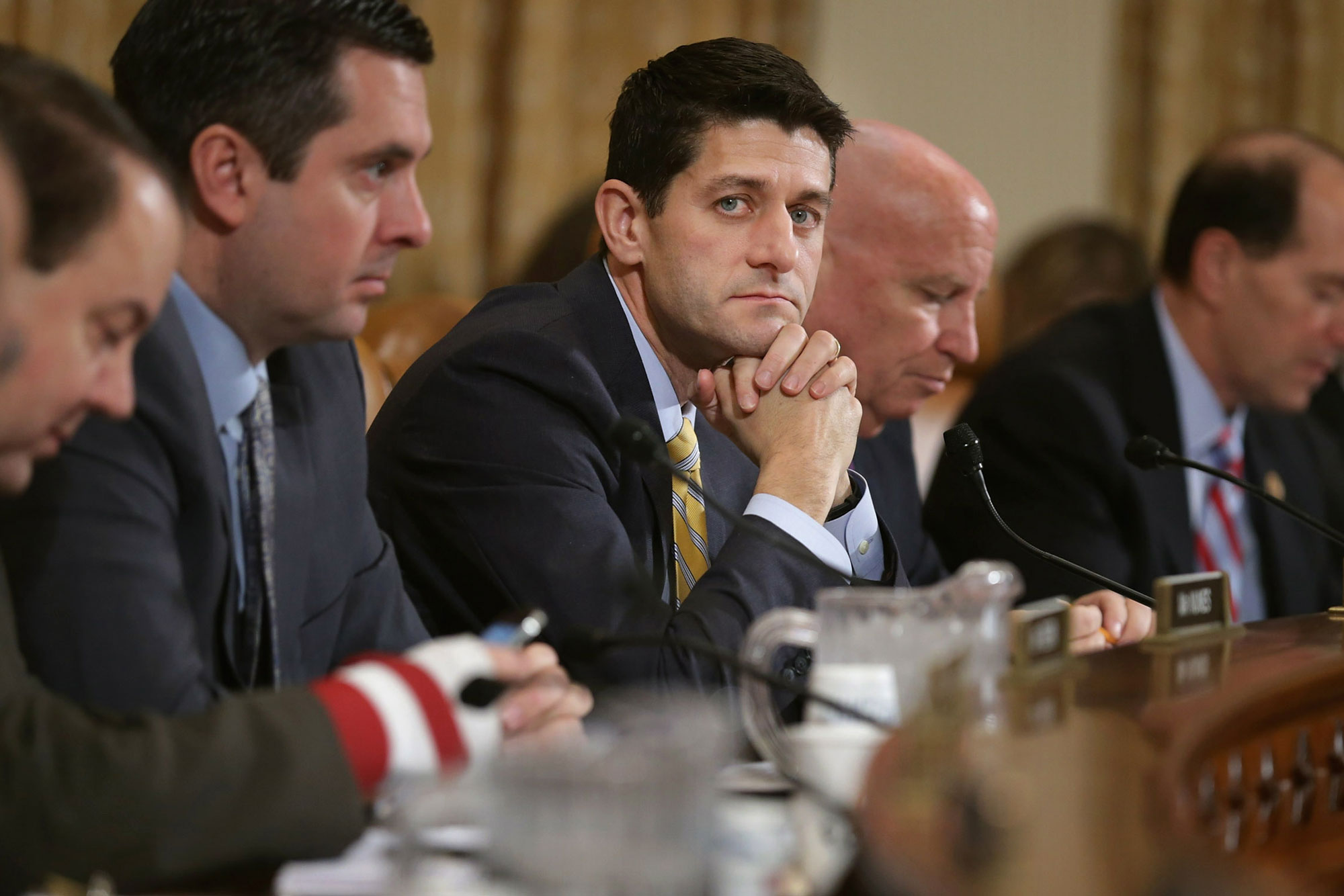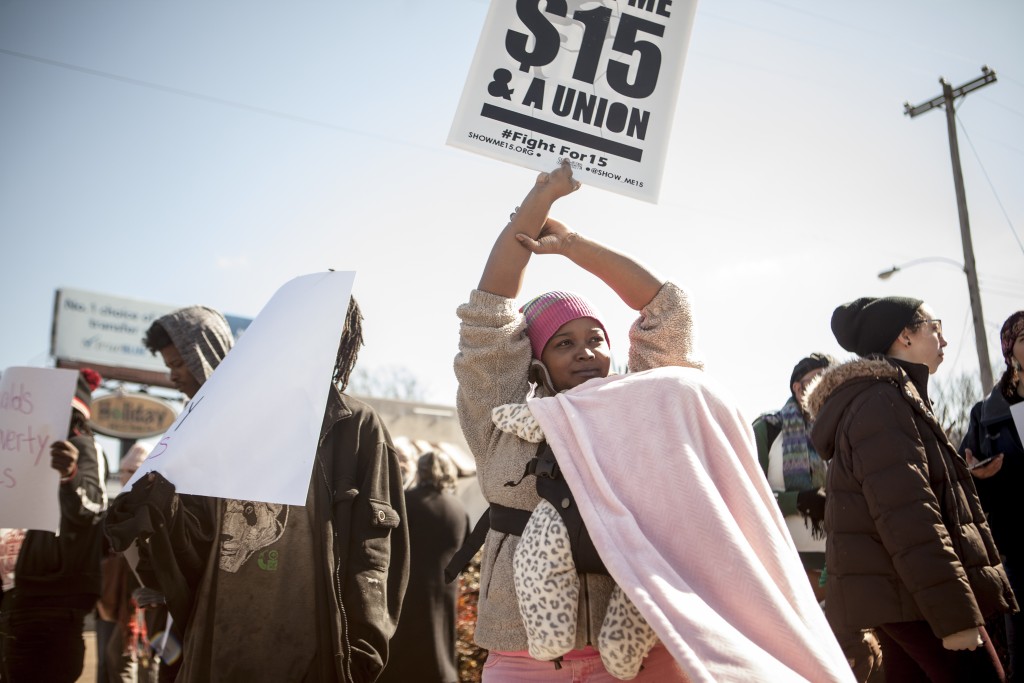Congressional Republicans would have us believe that the so-called “able-bodied” are everywhere among government anti-poverty programs, taking away assistance from those who are more “deserving.” But far from describing a defined demographic group, there is no standard definition that makes a person “able-bodied.” Rather, the term has long been ingrained with political and moral implications.
As Emily Badger and Margot Sanger-Katz write in The New York Times’ Upshot, “Across centuries of use, [the term] has consistently implied another negative: The able-bodied could work, but are not working (or working hard enough). And, as such, they don’t deserve our aid.”
I spoke with Badger to unpack the 400-year history of the term able-bodied.
Get TalkPoverty In Your Inbox
Rebecca Vallas: Emily, I have to admit I nerded out hard reading this piece—a 400-year history of the term that is centrally housed in every debate around the deserving versus the undeserving poor, something we’re very much living through in this political moment—just how very cool that you did this. Help tell that story, where does it go back to 400 years ago?
Emily Badger: The genesis for this piece is that my colleague Margot and I realized that we had this mutual suspicion of the term “able-bodied.” People constantly use it in conversation with us in Washington and in policy circles and the think tank world. But we both felt like we shouldn’t use this term ourselves as journalists, at least not without quotation marks around it, because it’s loaded, it carries a lot of connotations that people don’t explicitly express. And in Washington, it’s quite common that we fight about politics through rhetoric.
So Margot and I asked, what is the story behind the term? Where did it come from? How have we come to use it? What do people really mean when they use it?
We started reaching out to historians, and other people who are familiar with the backstory of the Medicaid program. Over and over again people told us that we need to learn about English poor law dating to 1601. It turns out that this set of laws—which are really the foundation of social policy in the United States—included the phrase “able-bodied.” They include from the very beginning this distinction between the impotent poor, meaning people who are powerless to help themselves, and the able-bodied poor. And the idea that we should provide resources and aid to the impotent poor but we shouldn’t freely give stuff away to the “able-bodied”—maybe what we should do is set them up at workhouses, try to connect them to work opportunities. But very early on there was this distinction between people who we thought should be working, and people who couldn’t work for a reason.
RV: The first distinction between the deserving and the undeserving.
EB: Exactly, and the idea that some people are worthy and some people are not gets expressed now in a lot of different ways. We talk about people who are lazy versus people who are industrious, or people who are able-bodied versus people who are crippled or disabled. Whatever language we use, there’s always this idea that one group unquestionably should be given help without judgment and the other group is probably trying to freeload off of the public. As one historian pointed out to me, that’s part of the reason we have these really expensive government bureaucracies in the United States around anti-poverty programs—we construct these elaborate bureaucracies to try to separate these two groups of people.
When we require people to qualify or submit new paperwork multiple times a year, or when we’re talking about work requirements, or when we require people to show that they’re in a job training program or that they’re actively looking for work even if they don’t have work available … all of that is part of this expensive process of trying to identify who is deserving and who is not.
RV: And one of the points that your piece makes is that “able-bodied” isn’t just an inherently political term—it’s also a heavily moral term, and that’s a large part of why politicians and elected officials are using it.
EB: Yeah, one of the historians put it really perfectly—he said that the physical distinction always implies a moral distinction. And even though this dates back to Elizabethan England, this idea is very American, too: that work is moral, if you are a good person you are working hard. If you are not working hard, that’s a result of some kind of moral failing on your part. That’s a very old puritanical idea but obviously it’s one that carries through to debates that we’re having in 2018 about programs like Medicaid.
RV: Today we’re familiar with the vast and expensive government bureaucracies you were describing that create hurdles for getting assistance—how did it work back in the 17th century?
EB: So the 1601 poor law in England codified what a lot of communities were already doing. It basically said we’re going to collect taxes from people and then redistribute them to support and help the poor. It placed the onus on people in individual communities, like parish wardens and overseers of the poor, to be responsible for collecting and redistributing that money. So there were people living in the community who knew, for instance, that David over here has tuberculosis and he can’t support his family and he’s got 8 children and they’re all dependent on him and obviously the mother can’t work because she’s also trying to take care of the children. It’s quite clear to the parish warden that David and his family are worthy.
Translating this idea over the years, we’ve erected these larger and more centralized government programs. Someone who is sitting in a Medicaid office in Kentucky doesn’t personally know you and your story to be able to say if they think you are clearly worthy or not. So these same distinctions are made through these other very complex processes: Can you show us a doctor’s note that explains why you aren’t capable of meeting a work requirement that we’ve imposed on you? Or some other qualification criteria. Essentially these bureaucracies are trying to do what the parish warden was trying to do 400 years ago.
RV: I was fascinated to read in your piece that apparently at some point the English came to recognize not just the able-bodied versus those who were not able-bodied, but a third group of people: the able-bodied who were blocked from work for reasons that weren’t about their bodies.
EB: Yeah, I think once you start separating the poor into two groups of people and make these distinctions, it will become clear that there are people out there who appear to be physically capable of work but they’re not working, and it doesn’t seem like they’re lazy, so there must be other things that are preventing them from working. Maybe the economy is really bad, or there aren’t enough jobs in the local community. Maybe this person isn’t very mobile and so they can’t travel to where the jobs exist.
If you deploy any thoughtfulness you recognize that there are plenty of people who don’t work for reasons that don’t have to do with their body. There are barriers to employment that are in the community, in the structure of the economy, embedded in discrimination in the labor market. And this process of setting everyone who is poor into one of these two categories becomes murkier once you realize that the world is more complicated than that.
But what was so striking to us about this history is that the language they were using to debate this, 300, 400 years ago, is identical to how we talk about the poor today. Not only are we still talking about the able-bodied and the deserving, but we’re still having arguments today about why aren’t “able-bodied” people working? Is it their own fault or is it because there are structural obstacles? And just as was the case 300 years ago, I think today we often have a hard time distinguishing between personal failings and structural obstacles. People still wind up frequently conflating structural issues with some kind of moral deficiency on the part of people, which is fundamentally unfair.
RV: One of the bureaucratic hurdles that has been set up over the years to make it harder for struggling folks to access basic assistance is drug tests. I was fascinated to learn from your reporting that modern-day drug tests actually have origins in the 18th century.
EB: Yeah, this is one of the particular moments in reporting this where everything came together for me and I realized how much we are having the same conversation today that we were having 400 years ago. One of the historians, Susannah Ottaway, told me that back in Elizabethan England, they started to set up these rules to try to distinguish who is worthy, and who is not. Things like, if anyone in the community has seen you getting drunk in the local alehouse we know that you are not worthy.
RV: Here was the rule, quote: “Nobody who tipples in the alehouse will get poor relief.” That was the 18th century drug test, right?
EB: Exactly. So if you can’t figure how to distinguish who is worthy from who is not then you set up rules that effectively force the poor to reveal themselves. This rule was about people who are drunk. Today we would set up a rule about drug-testing which is basically a hoop that we make the poor go through in order to reveal themselves as being someone who we ought give assistance to. And this is so similar to what you often hear in Washington today, when we talk about creating more onerous eligibility criteria. If you really need aid, you’re going to be willing to come in to the local bureaucratic office and fill out new paperwork every month, or you’re going to be more than happy to take this job training program as a condition of receiving aid, because if you really need it you will do anything to get it. And that’s the exact same idea that you could reveal yourself to be someone who desperately wants this by your willingness to overcome all the obstacles we’re putting between you and the aid.
And of course it ignores the fact that people may have a difficult time meeting all of those requirements for reasons that have absolutely nothing to do with their willingness or their desire. Maybe you don’t have a car and it’s not practical for you to get to this meeting every month, maybe your housing situation is really unstable and you don’t receive bureaucratic mailings that are sent to you twice a year reminding you to sign up for things.
RV: Now the Medicaid program itself is actually in many ways a historical tracker of the evolution of this kind of thinking. Medicaid began in 1965, with, as you put it, “Elizabethan notions in tact,” but over time has evolved to something that looks very different. Tell us a little bit of that story of the evolution of Medicaid.
EB: The Medicaid program originally recognized these very familiar classes of the “deserving” poor. If you are a pregnant woman, if you are blind, if you are physically disabled, these are classic categories that everyone has agreed to going back a long time, these are people who are worthy of help. And over time the Medicaid program has extended help to people beyond those core groups that would be familiar even in Elizabethan times. It’s extended to women who had certain kinds of cervical or breast cancer, it was extended to more parents, it basically became more expansive and more generous over time. And that kind of culminates in the Affordable Care Act when we’re finally saying it doesn’t matter if you’re a parent, if you have dependents, if you have some kind of physical condition that prevents you from working, whatever you are, if you make below a certain income, you qualify. We’re going to get rid of all of these other distinctions about who qualifies and who doesn’t and set an income cut-off.
That’s what the Affordable Care Act tried to do with the Medicaid expansion, which ultimately a lot of states declined to participate in. But that story, that evolution, marks a kind of progress from this history that we’ve been talking about. But what’s so notable about these new work requirements that are coming through Medicaid waivers from the Trump administration is that we’re now moving backwards. We’re rolling back that long-term story of expanding to more and more people. I think the term able-bodied has particularly come into fashion in the last five years or so because it has been used specifically to refer to the Medicaid expansion population.
But conservatives in particular who are concerned about all of the “able-bodied” are saying wait a minute let’s scale it back, let’s go back to trying to make some distinctions between who is able-bodied and who is not. But of course as we were talking about before, once you start saying that you want to make these distinctions between the deserving and the undeserving, then you realize wait, we have to carve out an exception for these people and for these people and for these people, and that exercise of carving out all these exceptions reveals the underlying folly of trying to make these distinctions in the first place.
RV: So given this history lesson, what’s your takeaway in terms of what we are seeing today?
EB: The main thing that Margot and I really wanted to get across in writing about this is that this is not a neutral term. It doesn’t have a technical definition. It’s being used in a slippery way to imply lots of unspoken things. And so just stop and take pause when you hear it. I think Margot and I are sort of secretly hoping that other journalists will realize that they should not just repeat this language when it comes out of politicians’ mouths. I would stick it in quotes if I had to use it in a story. We’re always going to fight about our politics through rhetoric in Washington. That’s not going to change. But at the very least let’s all be honest about what’s happening with this term.
This interview was conducted for Off-Kilter and aired as part of a complete episode on February 9. It was edited for length and clarity.




















